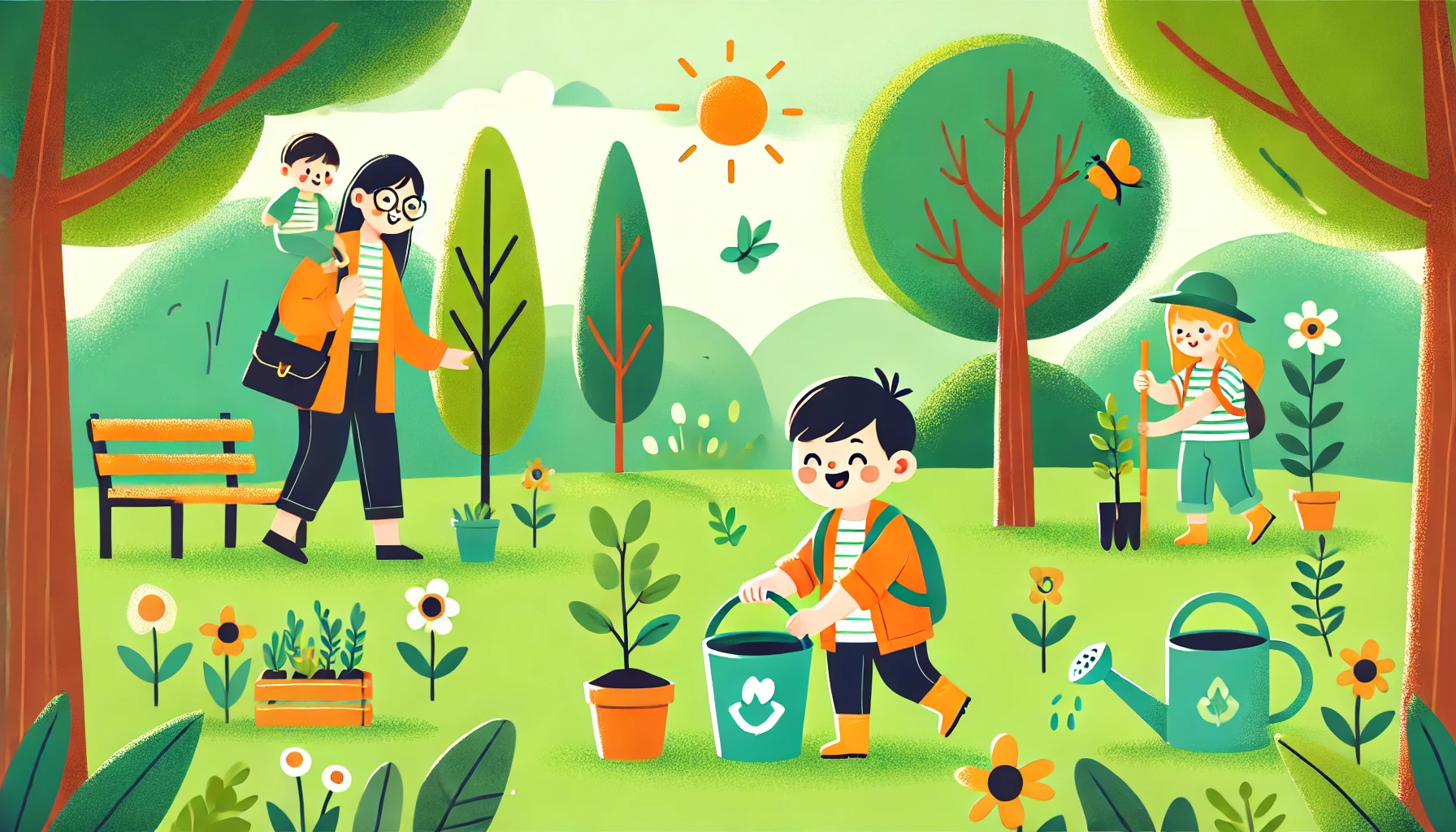How to Teach Young Children About Respecting Nature and Taking Care of the Environment
Teaching young children to respect nature and care for the environment helps build a lifelong appreciation for the planet. When kids learn how their actions affect the world around them, they become more mindful, responsible, and compassionate. Parents and educators can foster environmental awareness through hands-on experiences, storytelling, and leading by example. In this article, we’ll explore effective and age-appropriate ways to help children understand their role in protecting the environment.
Why Environmental Education Is Important for Kids
- Fosters responsibility – Helps kids understand that they can make a difference.
- Builds appreciation for the natural world – Encourages a connection with animals, plants, and ecosystems.
- Promotes sustainable habits early – Creates eco-friendly routines that stick.
- Encourages empathy – Teaches children to care for living things and shared spaces.
- Supports long-term environmental stewardship – Prepares the next generation to protect the planet.
1. Introduce Nature Through Outdoor Exploration
The best way to inspire love for nature is to let children experience it firsthand.
Activity Idea:
- Go on nature walks in parks, gardens, or even your backyard.
- Encourage children to notice birds, trees, flowers, insects, and clouds.
- Collect leaves, rocks, or sticks to start a nature collection or art project.
What Kids Learn:
- That nature is full of beauty and wonder.
- How different elements in nature work together.
- The importance of spending time outdoors.
2. Teach Simple, Everyday Eco-Friendly Habits
Start with small habits that children can do independently.
Activity Idea:
- Create a recycling center at home with clearly labeled bins.
- Teach kids to turn off lights, water, and electronics when not in use.
- Use reusable lunch containers, bags, and bottles.
What Kids Learn:
- That small actions can protect the environment.
- How to be thoughtful about waste and energy use.
- That helping the planet is a daily practice.
3. Read Books About Nature and the Environment
Books can help children visualize and understand big ideas in simple ways.
Activity Idea:
- Read titles like The Earth Book by Todd Parr or 10 Things I Can Do to Help My World by Melanie Walsh.
- Ask questions like, “What can we do like the characters in the book?”
- Let kids draw pictures or write about their favorite animals or outdoor places.
What Kids Learn:
- That the Earth needs care and attention.
- How others make eco-friendly choices.
- Ways they can apply these lessons in real life.
4. Plant Something Together
Gardening is a hands-on way to teach responsibility and how nature works.
Activity Idea:
- Grow herbs, flowers, or vegetables in pots or a small garden bed.
- Show how to water, care for, and harvest plants.
- Talk about pollinators like bees and butterflies.
What Kids Learn:
- How plants grow and what they need to survive.
- That caring for something helps it thrive.
- The value of patience and nurturing.
5. Practice Litter Cleanup and Respect for Shared Spaces
Teaching children to clean up after themselves promotes community responsibility.
Activity Idea:
- Organize a mini clean-up day at a park or playground.
- Show kids how to use gloves and trash bags safely.
- Reinforce the habit of throwing garbage in the right place.
What Kids Learn:
- That everyone shares responsibility for public spaces.
- How littering harms animals and plants.
- The pride of helping keep nature clean.
6. Introduce the Idea of “Reduce, Reuse, Recycle”
These three R’s form a solid foundation for sustainable behavior.
Activity Idea:
- Use recycled materials for art or crafts (e.g., cardboard, plastic lids, newspaper).
- Turn old clothes into rags, or donate unused toys and books.
- Talk about how recycling gives materials a second life.
What Kids Learn:
- How to give old items new purpose.
- That reducing waste helps the planet.
- The importance of creative reuse.
7. Encourage Kindness to Animals and Insects
Building empathy for living creatures nurtures a deeper respect for nature.
Activity Idea:
- Set up a bird feeder or butterfly garden.
- Teach kids to observe animals from a distance without disturbing them.
- Discuss how animals need clean environments just like people do.
What Kids Learn:
- That all creatures have a place in nature.
- How their actions affect animal habitats.
- The value of coexistence and protection.
8. Be a Role Model for Eco-Friendly Living
Children learn by watching the adults around them.
Activity Idea:
- Involve kids in green decisions, like bringing reusable bags or composting scraps.
- Say, “We’re using less water to help the Earth,” or “Let’s walk instead of drive.”
- Celebrate eco-friendly choices together.
What Kids Learn:
- That adults care about the planet too.
- How environmental responsibility is part of everyday life.
- That working together as a family makes a bigger impact.
Final Thoughts
Teaching young children to respect nature and care for the environment lays the foundation for a more sustainable, thoughtful future. With simple actions, engaging activities, and positive reinforcement, parents can help children see themselves as part of the natural world—and inspire them to protect it with love and responsibility.
